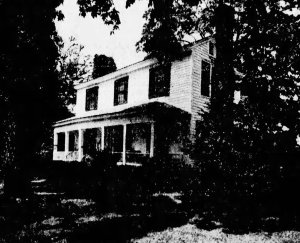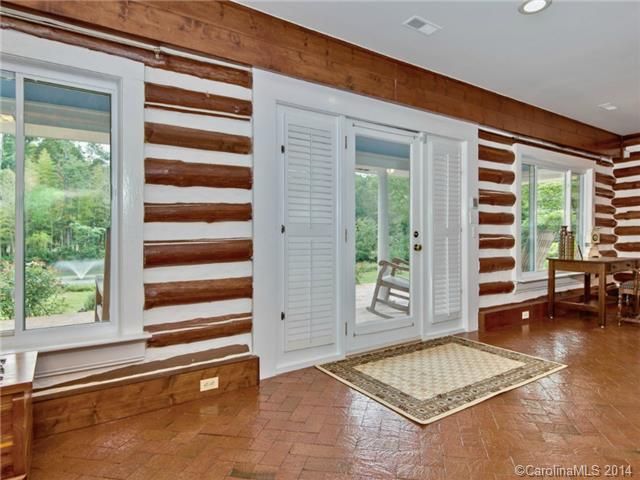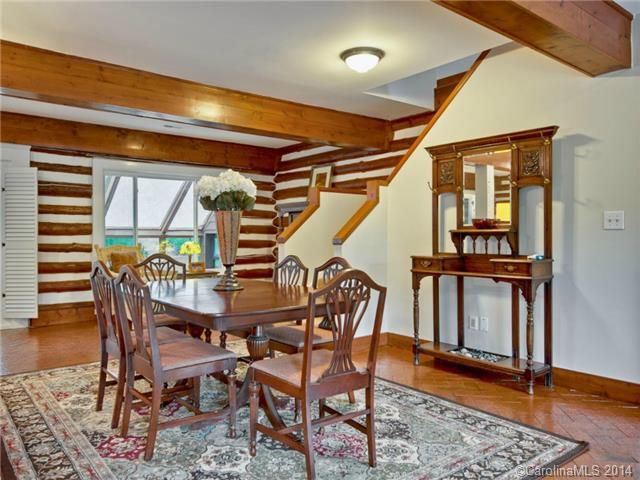Rev. Shelton Hutchison resided in a fine frame farmhouse on Providence Road near its intersection with Carmel Road (today Fairview Road). Called Mammoth Oaks, the farm had been in the Hutchison family for generations. The rolling hills and pastures were dotted with several spring-fed lakes. But by the 1920s, the farm was no longer profitable. So Shelton conceived the idea that the family should build golf course back on the lakes. He had to convince his father and brothers, but once they were on board a large log clubhouse was constructed with timber from the farm.
Mammoth Oaks Golf and Swim Club opened in 1924 as the first public golf course in Mecklenburg County. Initially, the idea that a rural public golf course would find mass appeal was doubtful–as Shelton’s brother Joe said, “Golf was a city slicker’s game, played only in private clubs.” But the club proved popular. Mammoth Oaks offered a variety of activities other than golf, including swimming and diving, tennis, and baseball. Numerous civic and church groups utilized the picnic grounds for events.
The golf course at Mammoth Oaks had nine holes, which was later expanded to 18 holes. At the clubhouse golfers could purchase passes and rent clubs, and caddies were available as well. Sutton Alexander was golf pro in 1929, and as a student at Centre College he won the Kentucky Collegiate State Golf Championship that year. The manager was C. K. Hutchison, Shelton’s brother who was better known as Pat.
Mammoth Oaks was known as a challenging course. A May 1931 article in the Charlotte News called it “a tricky eighteen-hole course” with its pitched sand greens. The first hole, which was located next to the lakes, was quite the hazard for golfers. The News said it “holds the distinction of being the greatest ball gatherer in the territory,” with the story that “balls have been taken from the lake in tens of gallon quantities.” The article also reported that Mammoth Oaks was one of the highest traffic courses in Charlotte.
Then came Black Tuesday, October 29, 1929. The Great Depression struck a blow to courses nationwide as golfers’ disposable income decreased. But Mammoth Oaks continued to be well patronized, with the Charlotte Observer reporting in April 1930 that “the crowds this spring are the largest in the history of the course.” Pat Hutchison quit his own business the following year to focus on improving Mammoth Oaks by planting grass on its sandy greens.

Local media wondered if Charlotte had too many public courses by 1932. Mammoth Oaks was first in 1924, but by the end of the decade there were a glut of choices for Mecklenburg County golfers: Carolina, Sharon, Pine Ridge, the municipal course, Carmel Road, and McClintock’s all had grass greens while Mammoth, York Road, Rocky Point, Providence, and Ridgeway had sand greens. Patronage was spread thin, and Mammoth Oaks lacked enough interested participants in the Charlotte News‘s annual golf tournament. By winter 1932 the Hutchisons ended golfing at Mammoth Oaks. The facility continued to host picnics, and the pool was open to the public. In 1936 the clubhouse was rented to the Girl Scouts as a meeting space.
Mammoth Oaks was no longer the successful property it once was. In 1946 the Hutchison family sold for $61,000 a parcel of 76.39 acres that once made up the golf course to a group led by P. R. Taylor of Gaston County. Plans were made to develop the land into a residential neighborhood.

Bernard and Eula Evers purchased Lot 313, which included the clubhouse and the lakes on approximately 8 acres, in 1947. They sold five acres including the clubhouse in 1950. The following year, the clubhouse returned to the Hutchison family when Shelton and Dorothy repurchased it. The Hutchisons rented the property, but by the late 1960s Shelton’s health was not good. They sold the clubhouse in 1968 to Harry and Betty Folts, who moved into what appeared to be a “dark, almost spooky looking cabin” with “waist-high grass, a leaky roof and fallen chimney.”
The Folts, who founded Charlotte Magazine, moved to Charlotte from Long Island, New York, where they restored an old farmhouse. So the family–Harry, Betty, Claudia (12), and Jimmy (10)–was up to the challenge of the Mammoth Oaks clubhouse. As Betty said, “We knew we’d be camping out for a while, but we thought the place too charming to pass up.” Weekends were spent restoring their new home. They rebuilt the chimney, which had the monogram MO inlaid into the brick. The former pro shop and caddie rooms in the center of the house became the living room. The women’s locker room on the left side was converted into the kitchen, and the men’s locker room on the right side became the primary bedroom. Upstairs, the attic was converted into a bedroom for Claudia.
Harry unfortunately died in 1975, and Betty sold the house two years later. The clubhouse eventually came into the possession of Frank A. Lubbers in 1981. Frank was an auditor who was employed at NationsBank. (He would retire from there as a Senior Vice President in Risk Management in 1993.) He continued to update the house, which became a hub of the Charlotte LGBTQ community. I believe it was Frank who expanded the attic to include two bedrooms, changing the roofline from hip-roofed to a gable roof with dormers. Frank was an avid gardener, and his home and its luscious yard was part of the Mint Museum of Art’s 1992 Garden Tour. Sadly, Frank died in 1996 from complications from AIDS. I’ll quote from his obituary here, because it’s quite touching:
In June of 1988, Frank was diagnosed as HIV positive. At a time when many people would have reacted by giving up, allowing self pity and fear to dominate their lives, Frank became proactive. He served on the Regional HIV/AIDS Consortium Allocations Committee, the RAIN Advisory Board, the N. C. ELCA Bishop’s AIDS Task Force, and the Lutherans Concerned Benevolent Fund Committee. He also served as speaker for the Myers Park Presbyterian Church AIDS Task Force and the Charlotte Business Advisory Council, and as a Hospice at Charlotte ADOPT Volunteer.
The clubhouse was last on the market in 2014, and I toured it! Unfortunately, I cannot find the photos I took. But the listing is still up, so you can see how neat the interior is! Much of its original charm remains almost a century later. I remember that it still felt somewhat like a clubhouse, because the living room was huge! We looked at the property because I thought it was cool, but it just wasn’t quite right for our family then. (My boys would love it now, especially the lake.)

















